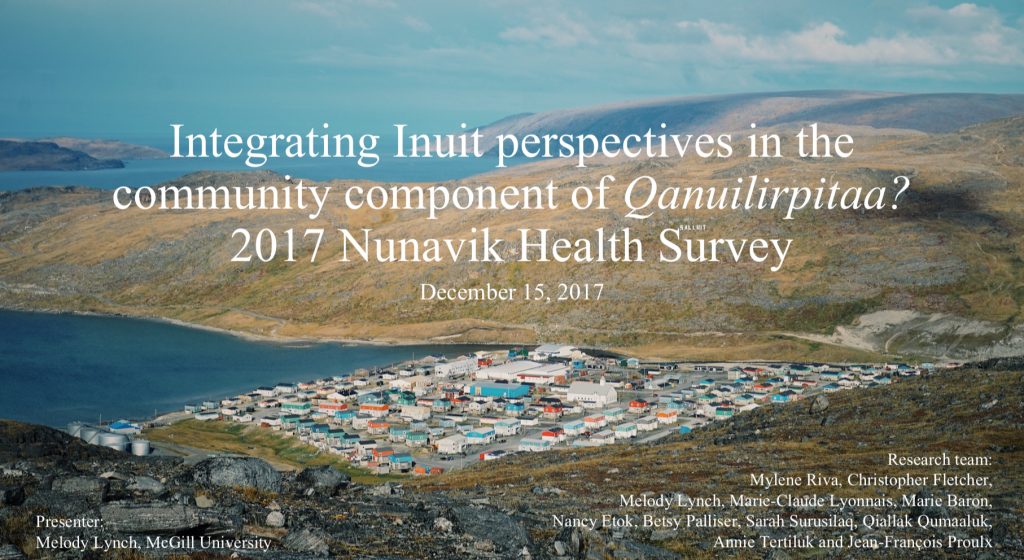With Prof. Mylene Riva (McGill University) and Prof. Christopher Fletcher (Université Laval), I will be presenting the ways in which the community component of Qanuilirpitaa? 2017 Nunavik Health Survey integrated Inuit perspectives to conceptualize and measure health and well-being for northern communities. The presentation will take place at the Arctic Change 2017 conference on Friday, December 15th in Quebec City. Hope to see you there!

Abstract: As part of Qanuilirpitaa? 2017 Nunavik Health Survey (hereafter Q2017) a ‘community component’ was developed to describe community conditions that are relevant for the health of Nunavimmiut from a lived Inuit perspective so that community-level strengths and challenges may be addressed effectively and people may live well together now and in the future. This presentation will address the data collection process of the community component, mostly realized between August and October 2017, when the Amundsen icebreaker was sailing to all communities in the region for data collection of Q2017. It also presents ways in which results will be returned to communities and to the region. In September 2016, 1.5-day workshops were conducted in two of the 14 communities in Nunavik, with the objective to conceptualize community conditions important for the health and well-being of Nunavimmiut and to develop relevant indicators of social and community conditions to be included in the survey. From the analysis of the workshop discussions, 10 main themes, or dimensions of community conditions, emerged: family, community relationships, healing, land, identity, food, local and regional development, education and skills, socioeconomic conditions, and safety and security. Together with the concepts of inuqatigitsiarniq (the ties that bind people together), piusiq (way of life or ‘core of things’, referring to both the strengths and values of the community), and other health and wellness concepts, these themes delineate the conceptual framework of the Community Component of Q2017. The measurement and description of the 10 dimensions of community conditions is realized by combining four different sources of data: individual responses collected from questionnaires answered by Q2017 participants; in-depth interviews with 3 to 6 key informants in each community to better understand locally relevant dimensions of community conditions; community-level socioeconomic and health data retrieved from administrative databases; and a mapping of locally available resources addressing the 10 themes. Data from interviews, mapping of community resources, and quantitative information characterizing communities, as well as historical and archival materials, will be analyzed, interpreted and integrated to create community portraits for each of the 14 communities. This will be undertaken in collaboration with the communities so that recommendations best reflect their concerns and experiences. The ultimate outcome of the Community Component is to identify ways that local factors that contribute to community health can be recognized and enhanced while also identifying areas where new programming and policy can be directed. The analysis and synthesis of the multiple sources of data will be undertaken with this pragmatic outcome in mind.
